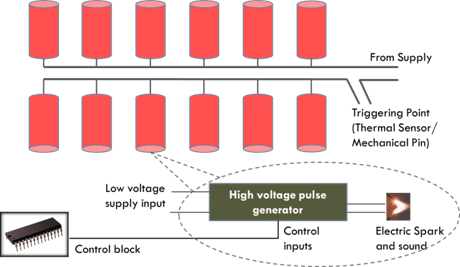Scientists at CSIR have developed range of water vapour and air-based crackers, as well as electronic ones, which will soon be made in hubs like Sivakasi.
Bengaluru: In a press conference earlier this week, Dr Harsh Vardhan, the Union Minister in charge of science & technology, earth sciences, the environment, forests & climate change, announced that Indian scientists are developing eco-friendly fireworks that will pollute less and cost less than conventional ones.
The fireworks industry in India is worth over Rs 6,000 crore, and provides employment to five lakh families indirectly. However, the fireworks not only contribute to off-the-charts pollution during Diwali season, but also often endanger the health and lives of factory workers, including underage children employed illegally.
Vardhan said the initiative, headed by scientists at the Council of Scientific & Industrial Research (CSIR), would curb pollution while ensuring there is no livelihood loss.
He also announced there would be an emission testing facility that will monitor and test ‘green’ fireworks, in line with the ‘Scientific Social Responsibility’ that Prime Minister Narendra Modi advocated last year, along the lines of Corporate Social Responsibility.
Also read: What are green crackers & how do we make them, ask Sivakasi’s troubled firework-makers
The new fireworks and who’s making them
CSIR is a government-funded research and development body, the largest publicly-funded R&D organisation in the country, and one of the biggest in the world. It currently has over 40 research labs across the country. The National Environmental Engineering Research Institute (NEERI) is a part of CSIR, is also centrally funded, and is a leading institute for studying environmental science and engineering.
CSIR-NEERI scientists have developed three types of crackers: Safe water releaser (SWAS), safe thermite cracker (STAR) and safe minimal aluminium (SAFAL).
A separate prototype for the popular flower-pot style fireworks have been tested and demonstrated to cracker makers in Sivakasi, Tamil Nadu, who are expected to start manufacturing them commercially soon.
The basic principle the new ‘green’ fireworks operate on is using water vapour or air to minimise particulate emission, which is a primary pollutant. Potassium nitrate, sulphur dioxide, nitrogen dioxide, and other barium compounds are the worst offenders for particulate matter, and the emission of these are reduced in the ‘green’ fireworks by an average of 35 per cent. However, the loud noise level of conventional fireworks has been retained.
CSIR is also building electronic fireworks called e-crackers. These are built to explode just like conventional fireworks, but using electricity.
The ‘E-Ladi’, for example, is based on high-voltage electrostatic discharge from a Tesla coil that will generate appropriate light and sound effects. It simulates conventional crackers by requiring actual application of heat to fire up. It is also customisable, and can be programmed to provide different light and sound effects.

Reducing chemicals in conventional crackers
Apart from completely new fireworks, CSIR has also been working with manufacturers to reduce certain chemicals in conventional fireworks today.
The chemical composition of ‘flower pots’, ‘jil jil’ and ‘atom bombs’ have been modified to remove aluminium and use magnesium instead. This change has been tested for months and has shown a reduction of up to 30 per cent of particulate matter.
Also read: 68% of Delhi-NCR residents won’t burn crackers this Diwali to help keep pollution in check
Currently, CSIR is also testing the ‘bijli’ cracker by eliminating the use of ash as a drying agent, which would lead to a reduction in particulate matter by 20 per cent.
CSIR-NEERI is also testing area source control through the development of a new system called PURE-WAYU. It is a ‘photochip’ material for local dust control that will monitor particulate emissions and combat them with substances like water vapour.






